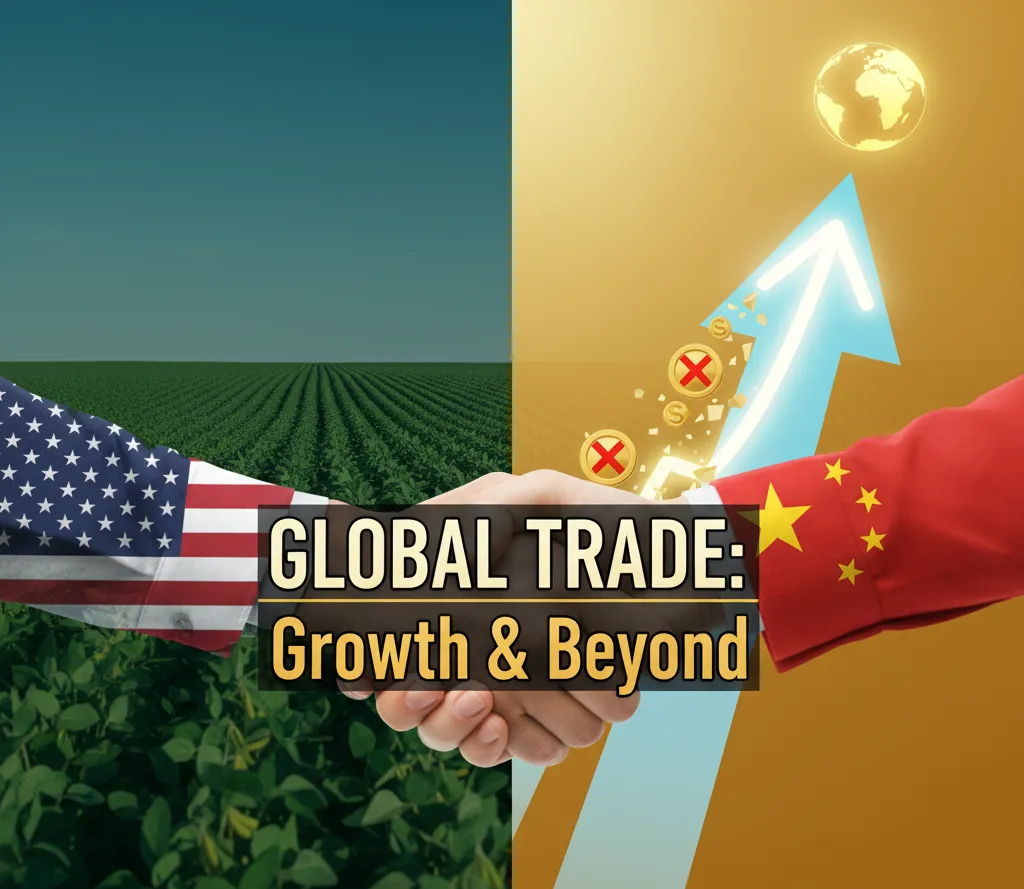US-China Trade Truce 2025: Soybean Deals, Tariff Cuts, and a Fragile Economic Balance

The recent face-to-face meeting between U.S. President Donald Trump and Chinese President Xi Jinping in South Korea marked an important, though cautious, step toward easing the enduring trade tensions between the world’s two largest economies. The summit ended with announcements of a new truce including major Chinese purchases of U.S. soybeans and sorghum, approvals for TikTok’s continued operation in the U.S., and tariff reductions. However, despite these headlines, analysts say the outcome is more a temporary bandage than a resolution of the deep structural and geopolitical challenges in the relationship.
Soybean Trade Deal: Economic and Strategic Impacts
China’s agreement to resume and significantly increase purchases of American soybeans comes as a relief to U.S. farmers who have borne the brunt of retaliatory tariffs and import bans imposed during the trade war. Treasury Secretary Scott Bessent confirmed that China has committed to buying around 12 million metric tons of soybeans in the current season through January 2026 and an additional 25 million metric tons annually for the following three years.
This represents a substantial volume playing a critical role in sustaining U.S. agricultural exports. However, experts warn that much of China’s past market share may be permanently lost as they have diversified sources to countries like Brazil and Argentina amid the trade conflict. China’s soybean imports serve primarily as livestock feed, making the commodity vital for food security, and Beijing appears intent on protecting this supply by spreading procurement sources to reduce risk from future trade disruptions.
Economically, this deal tidies over a painful chapter for farmers and contributes to some stabilization in agricultural commodity markets, but it does not fully restore the pre-trade war equilibrium. Soybean futures saw volatility amid the deal announcements, reflecting the delicate balance between optimism and the ongoing uncertainties in global trade.
TikTok and Technology Talks
The meeting also touched upon the fate of TikTok, the Chinese-owned social media platform facing national security scrutiny in the United States. While U.S. Treasury Secretary Bessent previously suggested a deal to spin off TikTok’s American operations was near completion, President Trump made no definitive announcements post-meeting. China’s Commerce Ministry noted plans to “properly resolve” TikTok matters without specific confirmations, indicating negotiations remain sensitive and ongoing.
In addition, technology issues including semiconductors and AI chips were discussed. Trump left open the possibility of easing restrictions on the export of advanced American chips, like those from Nvidia, but no conclusive agreements emerged. China seeks to continue expanding indigenous chip production while pushing for access to global AI technology, signaling this domain as a key future battleground in U.S.-China rivalry.
Tariffs and Rare-Earths: A Temporary Truce
President Trump announced a reduction of tariffs on Chinese goods from 57% to 47% as part of the truce, alongside a short-term agreement on rare-earth mineral supplies crucial for high-tech manufacturing and defense industries. Rare earths represent a strategic leverage point for China, and this deal gives Washington some breathing room while maintaining long-term pressure.
These tariff cuts and deals on critical minerals and fentanyl precursor chemicals were hailed as “amazing” by Trump, but many officials and analysts view them as provisional steps rather than durable peace agreements, noting Trump’s mercurial negotiating style and deep-seated geopolitical rivalry.
Broader Implications for U.S.-China Relations
While the immediate announcements provide some relief and a boost to sectors like U.S. agriculture - they mask a more complex and competitive relationship. China’s gains in rare-earth leverage and technology signal a strategic positioning that may constrain American ambitions. Meanwhile, unresolved issues like Taiwan, cyber security, and market access remain real threats to sustained détente.
The soybean deal, though promising for U.S. farmers in the short term, does not signal a full reversal of China’s diversification efforts nor an end to the long-term recalibration of trade ties. TikTok’s fate remains a key flashpoint in technology and national security debates. Analysts generally see the outcome as a truce that stabilizes tensions temporarily but leaves many core conflicts unaddressed.









